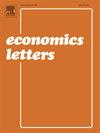何时降级产品:效用成本比规则
IF 1.8
4区 经济学
Q2 ECONOMICS
引用次数: 0
摘要
本文分析了信息不对称下产品退化作为一种筛选工具,强调了成本效益而不是传统的信息租金问题。使用虚拟剩余框架,我们得出了一个尖锐的、无分布的有利版本控制条件:当且仅当其效用成本比超过功能齐全的版本时,应引入降级产品。然后,我们研究了多个低端选项的设置,并确定了最佳设计的两个充分条件。当退化程度较高的产品能提供更优的效用减少成本效益时,企业倾向于选择退化程度较低的产品;当退化程度较低的产品能提供更好的效用交付成本效益时,企业倾向于选择退化程度较低的产品。本文章由计算机程序翻译,如有差异,请以英文原文为准。
When to degrade a product: The utility-to-cost ratio rule
This paper analyzes product degradation as a screening tool under asymmetric information, emphasizing cost-efficiency over traditional concerns about information rents. Using the virtual surplus framework, we derive a sharp, distribution-free condition for profitable versioning: a degraded product should be introduced if and only if its utility-to-cost ratio exceeds that of the full-featured version. We then examine settings with multiple low-end options and identify two sufficient conditions for optimal design. The firm prefers the more degraded product when it offers a superior cost-efficiency of utility reduction, and the less degraded one when it offers a better cost-efficiency of utility delivery.
求助全文
通过发布文献求助,成功后即可免费获取论文全文。
去求助
来源期刊

Economics Letters
ECONOMICS-
CiteScore
3.20
自引率
5.00%
发文量
348
审稿时长
30 days
期刊介绍:
Many economists today are concerned by the proliferation of journals and the concomitant labyrinth of research to be conquered in order to reach the specific information they require. To combat this tendency, Economics Letters has been conceived and designed outside the realm of the traditional economics journal. As a Letters Journal, it consists of concise communications (letters) that provide a means of rapid and efficient dissemination of new results, models and methods in all fields of economic research.
 求助内容:
求助内容: 应助结果提醒方式:
应助结果提醒方式:


